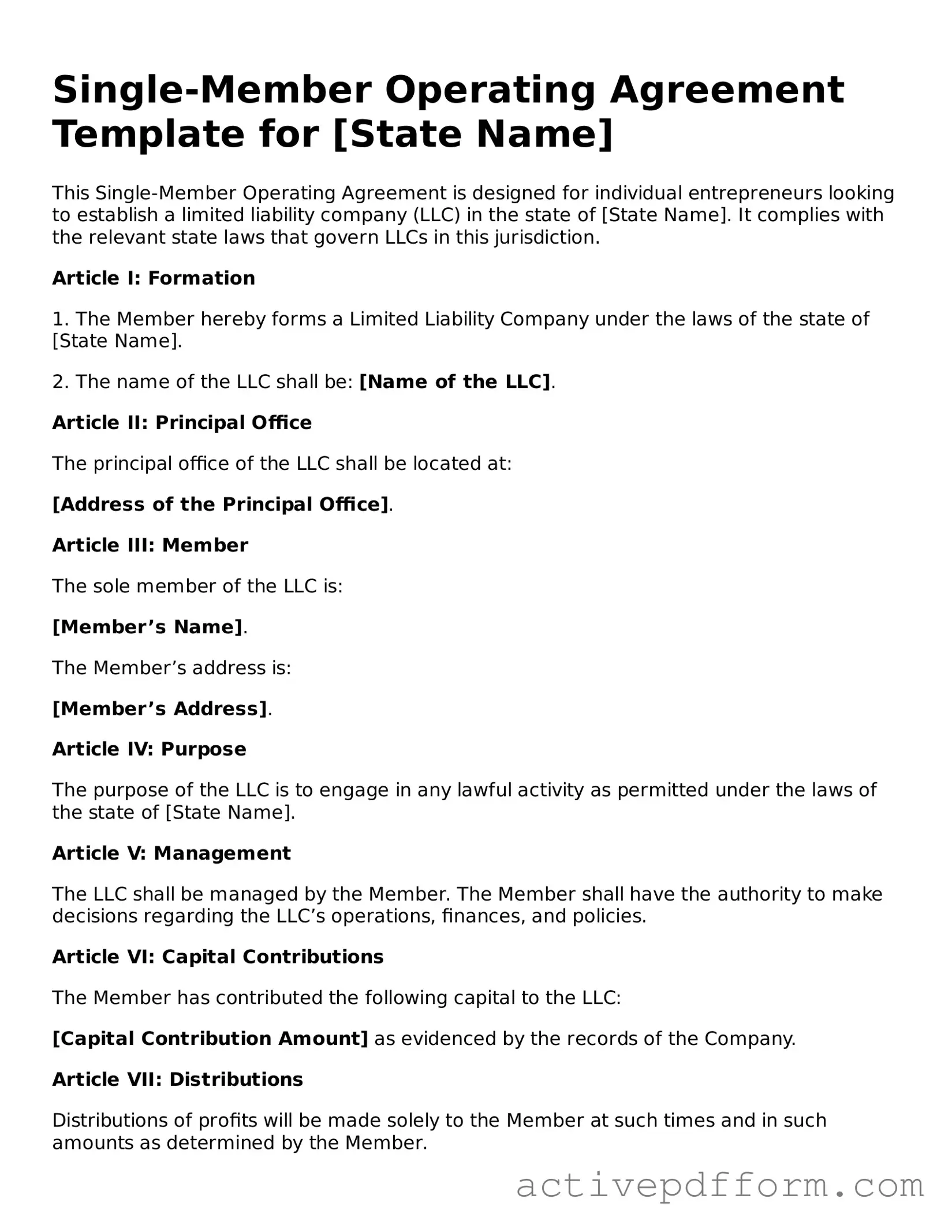Single-Member Operating Agreement Template for [State Name]
This Single-Member Operating Agreement is designed for individual entrepreneurs looking to establish a limited liability company (LLC) in the state of [State Name]. It complies with the relevant state laws that govern LLCs in this jurisdiction.
Article I: Formation
1. The Member hereby forms a Limited Liability Company under the laws of the state of [State Name].
2. The name of the LLC shall be: [Name of the LLC].
Article II: Principal Office
The principal office of the LLC shall be located at:
[Address of the Principal Office].
Article III: Member
The sole member of the LLC is:
[Member’s Name].
The Member’s address is:
[Member’s Address].
Article IV: Purpose
The purpose of the LLC is to engage in any lawful activity as permitted under the laws of the state of [State Name].
Article V: Management
The LLC shall be managed by the Member. The Member shall have the authority to make decisions regarding the LLC’s operations, finances, and policies.
Article VI: Capital Contributions
The Member has contributed the following capital to the LLC:
[Capital Contribution Amount] as evidenced by the records of the Company.
Article VII: Distributions
Distributions of profits will be made solely to the Member at such times and in such amounts as determined by the Member.
Article VIII: Indemnification
The LLC shall indemnify the Member against any and all expenses and liabilities incurred in connection with the LLC, to the fullest extent permitted by law.
Article IX: Amendments
This Operating Agreement may be amended only in writing and signed by the Member.
Article X: Governing Law
This Agreement shall be governed by and construed in accordance with the laws of the state of [State Name].
IN WITNESS WHEREOF, the Member has executed this Operating Agreement as of the _____ day of __________, 20____.
_____________________________
Member’s Signature
[Member’s Name]
